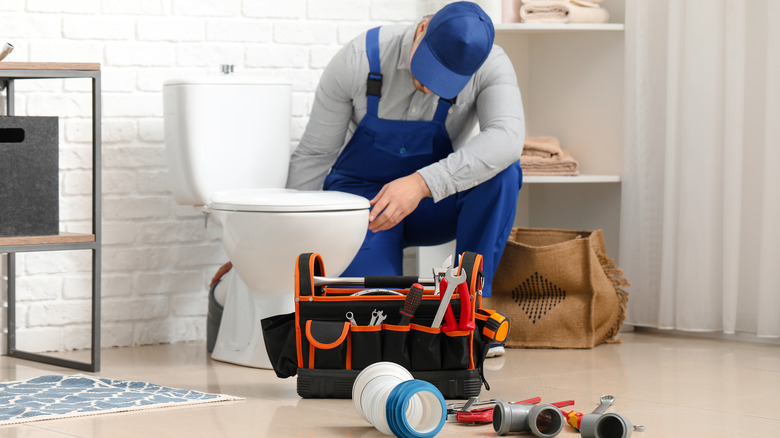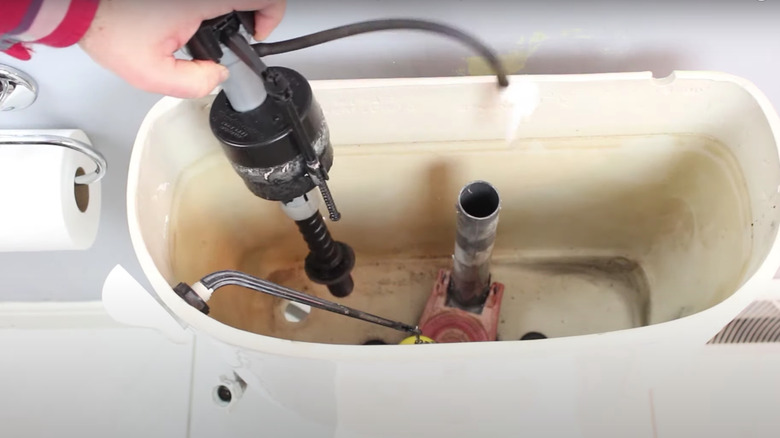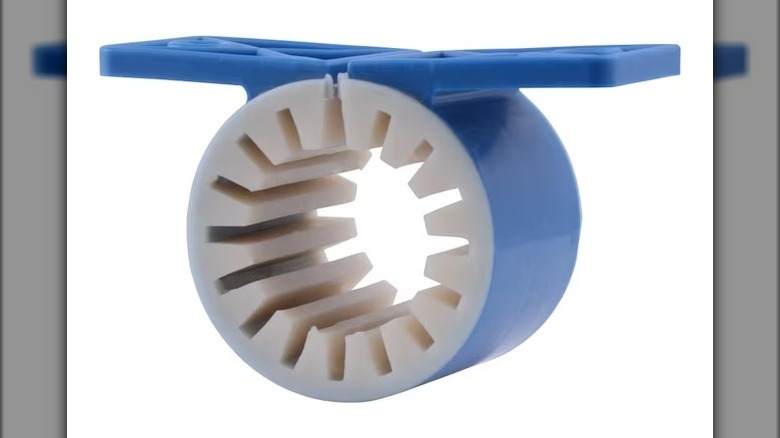If Your Toilet Sounds Like A Foghorn When You're Flushing, Something Is Wrong - Here's How To Fix It
Is your toilet sounding more like a foghorn on a misty, distant sea, perhaps auditioning for the next "Pirates of the Caribbean" soundtrack, than the swish-and-swirl you're accustomed to? Something is indeed amiss. The culprit could be a worn-out toilet fill valve diaphragm strumming like a bass guitar or a loose pipe giving its best vibraphone rendition every time water runs through it. Or perhaps, you're looking at a partially closed water supply valve. But before you seek the nearest plumber in a frenzy or start wondering how to save toilet water, basic knowledge of toilet noises and what they mean could make all the difference. Depending on the cause of your toilet's sudden musical ambitions, the remedy could entail opening the water supply valve fully, securing a wobbly pipe, or replacing the toilet fill valve.
So, why should you bother about the hollow sound when flushing a toilet? Here's the thing: ignoring the problem could spell disaster. Picture tons of water going down the drain, all thanks to a loose or damaged flapper or fill valve. And don't get us started on the impact on your wallet. As for the vibrating pipe, it could be a ticking time bomb waiting to burst and unleash chaos in your lavatory. So, whether you are tired of being ambushed by sounds resembling the mournful call of a distant whale or want to avoid the perils of a flooded bathroom, don't wait any longer to take action.
How to fix a toilet making a loud noise after flushing
Over time, the diaphragm within the toilet fill valve can deteriorate or loosen up, resulting in an unsettling rattling whenever water rushes in. Swapping the old fill valve should restore harmony to your restroom. For this, assemble pliers (or a wrench), a bucket, a sponge, and a toilet fill valve replacement kit. Start by shutting off the water supply to your toilet and flushing the toilet to drain the tank. Once you dab the residual water, disconnect the water supply line and unscrew the lock nut to detach the old fill valve. Now, the moment you've been waiting for — slide the valve replacement into the hole, secure it with the lock nut, reconnect the refill tube and water supply line, and turn on the water supply.
Water flowing through a pipe at high pressure can create vibrations that produce unwanted foghorn noise. Troubleshooting begins with identifying the troublesome pipe — the water supply line is the usual suspect here. Tighten the mounting brackets or clamps holding the pipe in place using a wrench or pliers. Yet another culprit; a partially closed valve skirting the fine line between restriction and liberation. Locate the water supply valve on the wall behind the toilet, typically close to the floor, and carefully rotate it counterclockwise to open it completely. With a sense of finality, flush the toilet and revel in the blissful silence as the foghorn noise dissipates into oblivion.
Precautions and possible deviations for quieting toilet flush groans
You can't just pick any toilet valve and hope for the best. It must be a well-fitted replacement that matches the specs of your toilet. After all, you don't want an inappropriately sized component wreaking havoc in your bathroom. And did you know that toilet fill valve replacement kits come in various forms? From the floatless wonder to those with a ball cock, float cup, or internal float, you've got options galore. If you're about keeping things brand-specific, some fill valves can only be replaced with a model from the same toilet manufacturer — talk about match-making at its finest.
Clamps are great for minimizing pipe vibrations, but why not take it up a notch with foam padding or rubber inserts? As for pipes hidden behind a wall, involving a professional plumber is way safer and wiser than turning your bathroom into a DIY demolition site. Should the water supply valve give you a hard time, don't fight it with brute force. After all, you don't want to transform your bathroom into a mini swimming pool. Simply grab a pair of pliers or a wrench and gently coax that valve into submission. If it's corroded, a little penetrating oil might do the trick. But sometimes, it's reasonable to replace the component. And for those persistent leaks and noises? Professional intervention is the safest and most efficient approach.


